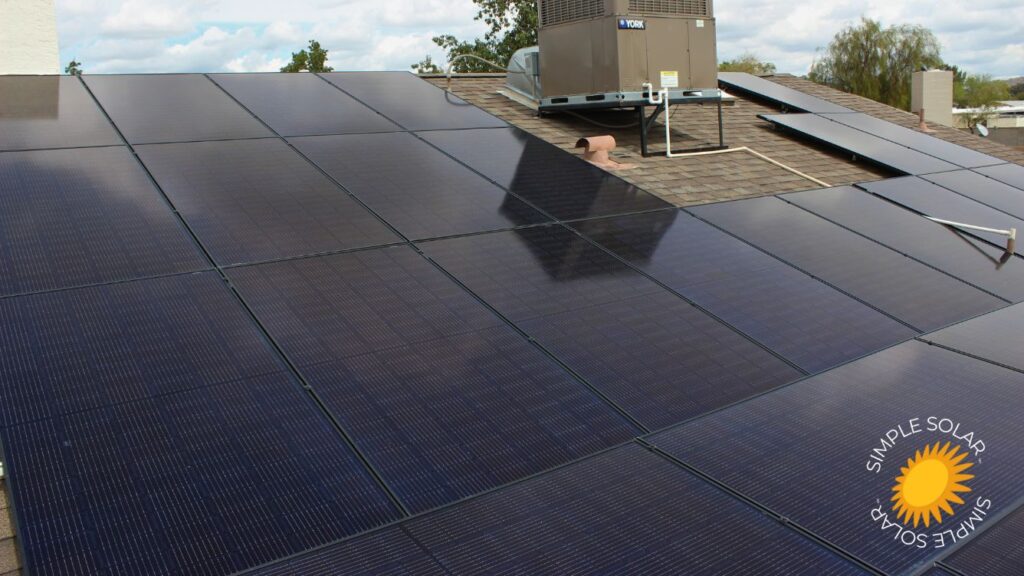The solar panel is on the rise throughout the U.S. For the first time, 8% of U.S. households now have solar panels, which is a rapid increase from recent years.
Much like any newer technology, you undoubtedly have some questions. Look at your energy bill and find a few surprises and inconsistencies. So, why does my solar output vary throughout the day, and is there anything I can do to improve it? Let’s find out.
Weather
First, and most obviously, we have variations in weather. If you live in Phoenix, you will likely have a different experience than someone living in Flagstaff.
Even so, weather conditions can dramatically affect your solar output throughout the day, as clouds, temperatures, and atmospheric changes will block or accelerate the sunlight your panels receive.
Clouds are an obvious hindrance, but atmospheric changes are less visible. When air pressure rises, so does the solar illuminance and, therefore, your solar output.
Moreover, while you may assume that the hotter and more direct sunlight, the better, you would actually be mistaken. Believe it or not, the optimal temperature for solar panels is 77ºF or 25ºC. The photovoltaic cells in the panels absorb sunlight with maximum efficiency at this standard temperature. The hotter or colder it gets away from this sweet spot, the less efficient your panels will become. Every panel has this type of efficiency loss, it is a characteristic of all solar panels. It does not mean that it will damage the panels, it just becomes less efficient for the period the temperature is not optimal.
At Simple Solar, we take these average temperatures and weather patterns into account when we forecast our energy output. We also consider average cloudy days and produce performance estimates to guarantee that. If your solar panels underperform, you are compensated for the loss. This even applies to bouts of unexpected bad weather.
Sunlight Optimization
The next factor contributing to solar output is how effectively sunlight can reach your panels. Throughout the year, the sun rises and sets in different (relative) locations in our sky.
Generally speaking, sunlight is weakest in the morning and strongest between 10 am and 4 pm, depending on where you live, the time of year, the weather, and other factors we’ll discuss. As the sun is closer to the horizon, its rays travel through more atmospheric filters, weakening its effects. This is why you can look at the sun while it’s setting.
Also, if your panels are attached to your roof, you can’t rotate them for optimal output throughout the day. Therefore, depending on the position of your panels, there should be a fairly consistent optimal time with all other factors equal.
What Can You Do to Optimize Your Solar Output?
You can take a few simple steps to optimize your solar output and keep your panels running for as long as possible.
First, it starts with the panels you choose. Ideally, you want to choose solar panels with a temperature coefficient that’s close to zero. Let’s say your solar panels have a coefficient of -0.4 percent. In this case, its output on hot days will drop around twice that much relative to the output of a panel with a coefficient rating of only -0.2 percent. Talk to your solar installation professionals to learn more.
Also, if you have light-colored roofing, it can help keep your solar panels cooler during the hot daytime. Other passive cooling techniques exist for those living in hot areas, but they’re harder to maintain over time. Setting yourself up with the right solar array is the best solution.
For those worried about cold weather, all other factors will offer the best results. Remember, the sun is further south from our position during the winter (in the Northern Hemisphere). Therefore, most solar experts recommend angling your panels at 45 degrees for the best year-round results.
However, with weaker sunlight, more frequent storms, and cold temperatures, setting yourself up for a productive summer is best. Unless you don’t have access to the grid, this should keep your energy bills low year-round!
Finally, our last tip is to follow your routine maintenance schedule. Keeping your panels clear of debris and free from scratches will ensure that you receive optimal sunlight year-round.
Stay Lit All Year
Now that you understand some common reasons why your solar output changes throughout the day, you can see that it’s perfectly normal and nothing to worry about. It isn’t a sign that your panels are wearing but that they function normally.
Stay updated with our latest solar energy tips, and check out our solar installation services to learn more!





